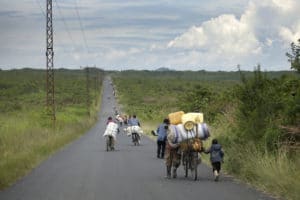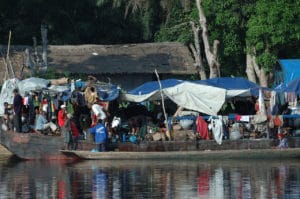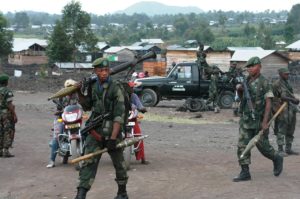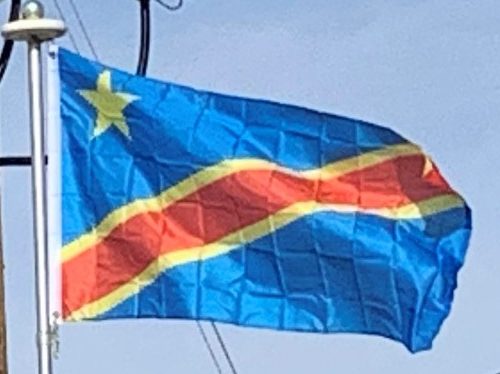
In the resulting M23 rebellion, M23 briefly captured the provincial capital of Goma in November 2012. Neighboring countries, particularly Rwanda, have been accused of arming rebels groups and using them as proxies to gain control of the resource-rich country, an accusation they deny. In March 2013, the United Nations Security Council authorized the United Nations Force Intervention Brigade, the first offensive United Nations peacekeeping unit, to neutralize armed groups. On 5 November 2013, M23 declared an end to its insurgency.
Additionally, in northern Katanga, the Mai-Mai created by Laurent Kabila slipped out of the control of Kinshasa with Gédéon Kyungu Mutanga’s Mai Mai Kata Katanga briefly invading the provincial capital of Lubumbashi in 2013 and 400,000 persons displaced in the province as of 2013. On and off fighting in the Ituri conflict occurred between the Nationalist and Integrationist Front (FNI) and the Union of Congolese Patriots (UPC) who claimed to represent the Lendu and Hema ethnic groups, respectively. In the northeast, Joseph Kony’s LRA moved from their original bases in Uganda and South Sudan to DR Congo in 2005 and set up camps in the Garamba National Park.
In 2009, The New York Times reported that people in the Congo continued to die at a rate of an estimated 45,000 per month – estimates of the number who have died from the long conflict range from 900,000 to 5,400,000. The death toll is due to widespread disease and famine; reports indicate that almost half of the individuals who have died are children under five years of age. There have been frequent reports of weapon bearers killing civilians, of the destruction of property, of widespread sexual violence, causing hundreds of thousands of people to flee their homes, and of other breaches of humanitarian and human rights law. One study found that more than 400,000 women are raped in the Democratic Republic of Congo every year.

The war in the Congo has been described as the bloodiest war since World War II. On 8 December 2017, fourteen UN soldiers and five Congolese regular soldiers were killed in a rebel attack at Semuliki in Beni territory. The rebels were thought to be Allied Democratic Forces. UN investigations confirmed that aggressor in the December attack.
According to the Human Rights Watch and the New York University-based Congo Research Group, armed troops in DRC’s eastern Kivu region have killed over 1,900 civilians and kidnapped at least 3,300 people since June 2017 to June 2019.

In 2015, major protests broke out across the country and protesters demanded that Joseph Kabila step down as President. The protests began after the passage of a law by the Congolese lower house that, if also passed by the Congolese upper house, would keep Kabila in power at least until a national census was conducted, a process which would likely take several years and therefore keep him in power past the planned 2016 elections, which he is constitutionally barred from participating in.
